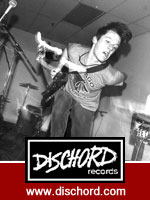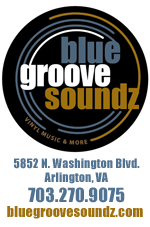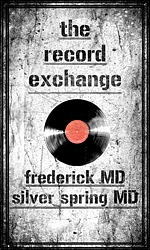
PHOTOS: RICHIE DOWNS | Usually I spend three days before a concert plumbing the depths of the band’s discography, but this time there was no need. I know Led Zeppelin’s back catalog like the back of my hand. So I walked to the venue listening to an astrophysicist with a thick Italian accent explaining orbital mechanics over a poor-quality long-distance call. I mention this interview because it turned out to be an oddly fitting warm-up act for JBLZE—it’s as confusing as it is fascinating.
From the beginning, it’s unclear what JBZLE is supposed to be: cover band? Nostalgia trip? Both at once, or something else entirely? To the band’s credit, it’s also difficult to fuss too much about this performative identity crisis. JBLZE is undeniably fun. They’ve been opening for Peter Frampton recently, and they hit the much smaller stage at the Fillmore with the same energy—they’re loud, proud, and happy to be there.

So is the audience, a mixed collection of Baby Boomers out on Date Night, parents who have dragged their children along (or vice versa), and die-hard Led Heads difficult to categorize any other way. In the queue outside the venue, a teenager chatters at her father about other concerts they’ve clearly been to together. He catches my eye over her head and shrugs, smiles. She’s got the bug. It’s a familiar scene; ten years ago it might have been my father and me.
The family resemblances don’t stop there. Jason Bonham reminisces about his own father between songs, recalling how the resurgence of analog audio led him to an unexpected discovery: that the liner notes give Bonzo songwriting credit on “Good Times, Bad Times.” “He didn’t play an instrument [besides the drums],” Jason explains, “so how did he get the ideas across?” He sang them, according to Jimmy Page, who answered this question with an anecdote about “Out on the Tiles”—which started with one of Bonzo’s old drinking songs.
The audience hangs on Jason’s words, eager to hear a piece of Led Zeppelin lore straight from the horse’s mouth—even if they’ve heard the story a hundred times before. It’s a forgiving group, which might be a good thing; they seem blissfully unconcerned by the parts of the performance which don’t quite work.
Most of it does. Bonham’s drumming has improved since 2007 at the O2 reunion show, and he’s found a good axman to front the group in Page’s place: “Mr. Jimmy” Sakurai. This is no small feat, but Sakurai does an admirable job. He’s so well-versed in Zeppelin’s music and Page’s gestural vocabulary that you can almost pretend he is Page if you’re up in the balcony—until one of those iconic moves is a little too stiff, a little less fluid. Little bows to the audience after particularly recognizable moves also undermine the illusion, if that’s what it’s supposed to be.
That said, Sakurai clearly knows his shit. Before they dive into “Since I’ve Been Loving You”—a reliable Led Zeppelin set piece—Jason explains that when they started rehearsal he suggested they do the version from ’73, to which Sakurai answered, “Which one?” When Jason replied, “Madison Square Garden,” Sakurai asked, “Which night?” This encyclopedic knowledge earns him some prestige points from annoying people like me who have logged a lot of hours listening to live Zeppelin shows. The dude’s done his homework.
Sakurai knows Page’s moves not only from the studio recordings and footage from The Song Remains the Same or the 2003 Led Zeppelin DVD, but from countless live performances recorded one way or another (Zeppelin has been and continues to be extensively bootlegged, despite or perhaps because of the paucity of official live releases). For instance, the transition from “White Summer/Black Mountain Side” to “Kashmir” is recognizable to anyone who’s listened to Zeppelin’s sets from the back end of the ’70s. It’s a great segue, especially if you don’t know it’s coming, judging by the ecstatic reactions from people standing around me when that monolithic riff comes crashing in.
Perhaps the more valuable lesson from Led Zeppelin’s glory years is that variety is the spice of life—and live performance. While there certainly are familiar flourishes and leitmotifs from one show to the next, Zeppelin rarely played anything quite the same way twice. JBLZE tries this kind of playful improvisation (a rave-up in the middle of “Over the Hills and Far Away” stands out as especially compelling) but there are other good cues they don’t take from Zep’s heyday: the faster pace of “What Is and What Should Never Be” that make live cuts of the song so dynamic, for example.

Ultimately, JBLZE seems wary of wandering too far off the reservation. Revisions are mostly kept to the solos, transitions, and outros, so the musical meat is essentially what listeners would expect to hear based on the studio albums. But there are one or two unexpected delights. “There’s so many layers to Led Zeppelin,” Jason tells the crowd, “and if we didn’t do something acoustic we’d be missing a part of what made them so special.” There follows a lovely rendition of “Hey Hey What Can I Do,” which Zeppelin originally left on the cutting room floor and only surfaced as the B-side to “Immigrant Song” before it was included on deluxe editions of Coda.
Unfortunately, the chance to hear this hidden gem played live is followed by a sharp misstep. “Going to California,” one of Zeppelin’s most delicate pieces and a staple of their acoustic sets, emphasizes the ill fit of vocalist James Dylan. He looks out of place before he even opens his mouth, his aesthetic more reminiscent of Chris Daughtry than Led Zeppelin. The bigger problem is that Robert Plant’s vocal acrobatics are difficult to imitate for most (male) singers.
Though he may not be best remembered for his subtlety, Plant could sing like an angel as well as scream like a banshee, a versatility Dylan simply doesn’t have; he elides the long melisma in the middle of “Kashmir,” while his wails on “No Quarter” (a surprisingly ambitious choice) don’t demonstrate good vocal control. But “Going to California” is particularly bad, the atonal yowling at the end emphasized by James’s inexplicable impulse to cup his hands around his ears, a posture which makes him look more like Edvard Munch’s Scream than anything else.
This gaffe draws attention to JBLZE’s muddled intentions: they don’t seem to know if it’s impression or homage. Conveniently, most of the audience doesn’t seem to care. They’re not concerned about the porous parameters of the artistic project; they’re just there to hear their favorite songs again. Jason plays unabashedly on their nostalgia, cracking jokes about the glory days “when you were smoking drugs that weren’t prescription,” and needling older attendees to explain to the younger ones what 8-tracks are after the show. It feels a little heavy-handed, but it seems to work on the sixty-something woman next to me, who dutifully takes pictures with a charmingly retro digital camera, and another in the orchestra seating who blows kisses at the band during “Ramble On.”
“Let’s grow older together,” Bonham says, before the first notes of “Stairway to Heaven” elicit a rush of adulation from the audience. It’s a peculiar performance on Sakurai’s part, a musical mosaic of Page solos, mostly culled from The Song Remains the Same and Earl’s Court in 1975 (if memory serves). But nobody’s bothered by this; they’re more than willing to get swept up in a song they’ve loved for fifty years. Nor does their enthusiasm wane when ten minutes of “Stairway” are up. Lost in the magic of the music, they yell and stomp until the band comes back for the inevitable encore. Whatever JBZLE is trying to do, it works well enough for them. It’s a powerful nostalgia trip, but at the same time, it’s a bittersweet reminder that you really can’t go back.
PHOTOS: RICHIE DOWNS FROM SEPTEMBER 11, 2019.













